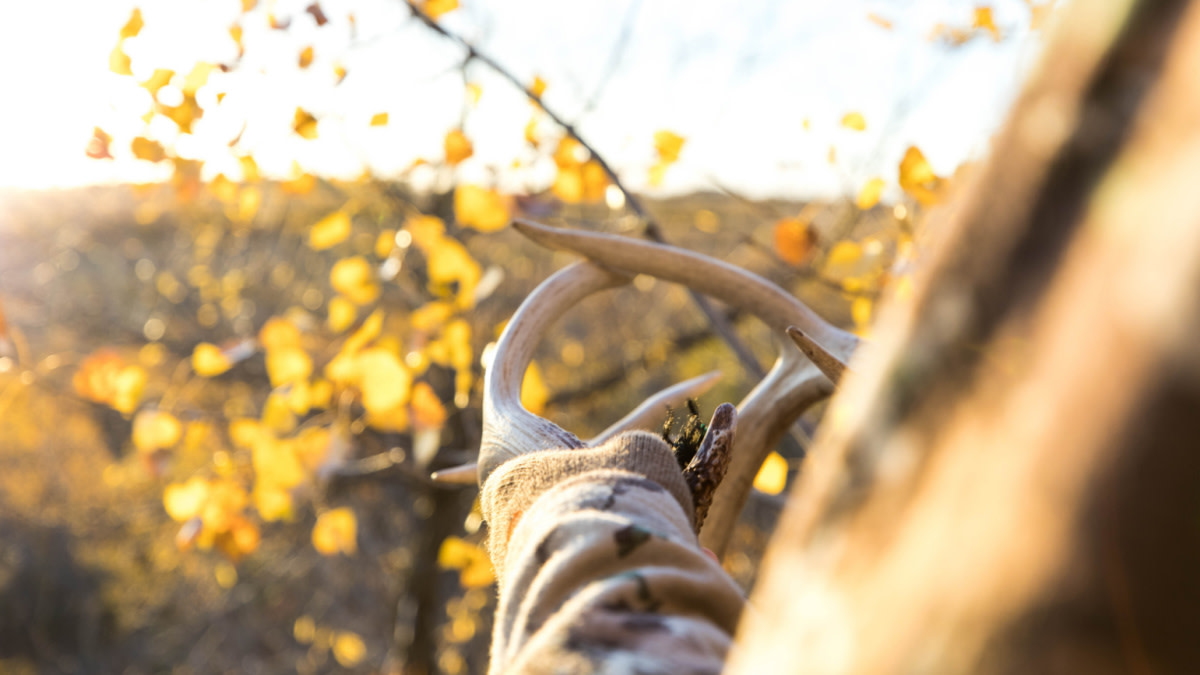
The rut is the promised land. It’s the great equalizer between hunter and hunter, and hunter and whitetail. It’s a couple-week period that is destined to deliver dumb deer to us, and if we’re lucky, provide a magical encounter or two that makes it all worth the wait.
Except, it mostly doesn’t. The rut is kind of like a trip to Disney World. The buildup is incredible, but the reality is that most of the time you’ll be waiting in line while sweating profusely, or spending $100 to feed your kids chicken tenders that would cost way less just outside of the gates.
I can’t give you too many tips on how to enjoy Disney, except maybe to maybe bring along some recreational drugs. To make the most of the rut, however, it’s often the mistakes we make that cost us the magic and the opportunity. The following are five of the most common.
Calling For The Sake Of Calling
Clint Campbell hosts the Truth From The Stand Podcast and is an avid public land hunter from Pennsylvania. He is adamant that too much calling, or calling at the wrong times, is a rut killer for many hunters.
“Just because it’s the rut,” Campbell said, “doesn’t mean the bucks will come running when they hear antlers crack together or a bunch of grunts. I prefer to see a buck and then read his body language before calling. Tossing out Hail Mary calls just because it’s the rut is going to hurt most hunters.”
The Wrong Calls
Deer do fight. Deer do communicate vocally. They just don’t do either very much, even in the heart of the rut. This is highly local advice, but it’s every hunter’s job to understand what calls are appropriate at any given moment, and which ones aren’t.
If you’re hunting an area with a poor buck-to-doe ratio, or a lack of mature-age deer, rattling with a set of Booner antlers is going to send out the wrong message. The same goes for snort-wheezing at every deer you see or grunting with unnatural enthusiasm. Subtlety is a beautiful thing, and nature does it well. Read the herd, and communicate to them on their terms.
Scraped & Bruised
“I love scrapes, but paying too much attention to them during the rut, especially the first week of November, can be a waste of time,” Campbell said. “The window for hunting scrapes can be incredibly small, and I often find a scrape that was hot just a few days ago might suddenly go cold when the chase phase is on.”
In my experience, Campbell couldn’t be more right. Focusing on scrapes for a rut hunt is sort of like building a strategy off of summertime trail camera images. Sure, the bucks were there at one point, but what good does it do you now? The only exception is an active, community scrape that is obviously experiencing a fair amount of hooved visitors. If you find that, hunt it now.
Fingers Crossed
Some hunters look at the rut just like they look at the opening weekend of gun season. They cross their fingers and hope for an encounter. With the rut, this hope hinges on the breeding urge. With the gun season kicking off, this hope relies on the sheer amount of disturbance in the woods. The same rules apply to both, and crossing your fingers on a chance encounter is a poor strategy.
“The idea that anything can happen in the rut, so you should sit all day in one spot is a lost opportunity for most hunters,” Campbell said. “If the deer aren’t playing along, you need to go look for activity, and be as aggressive as necessary.”
This is a big mistake that a lot of hunters make. Riding out a dead program in one spot because you believe all-day sits will bring a buck past is often a recipe for long, boring days— days that don’t end in grip-and-grin photo sessions. Instead, keep active and look for fresh sign.
Zoned Out
Last year, while filming One Week In November, I had two encounters with 150-class bucks. Both showed up out of nowhere, and one ended up wearing my tag. The other didn’t. While I was super happy to kill the first buck, I would have really liked to kill the second as well. But we weren’t ready.
The rut, as much as we talk about how much it can go from zero to a million in a matter of seconds, has a way of goading us to zone out. This, when coupled with random scrolling on your smartphone, or being sleepy from days of hunting, can cost you a deer.
Do what you have to do to stay alert, and glass a lot. Catching sight of a buck trotting in 10 seconds before he gets to you as opposed to three, can be a huge difference maker. Pay attention out there, it’ll help you kill more deer.
Feature image via Captured Creative.





